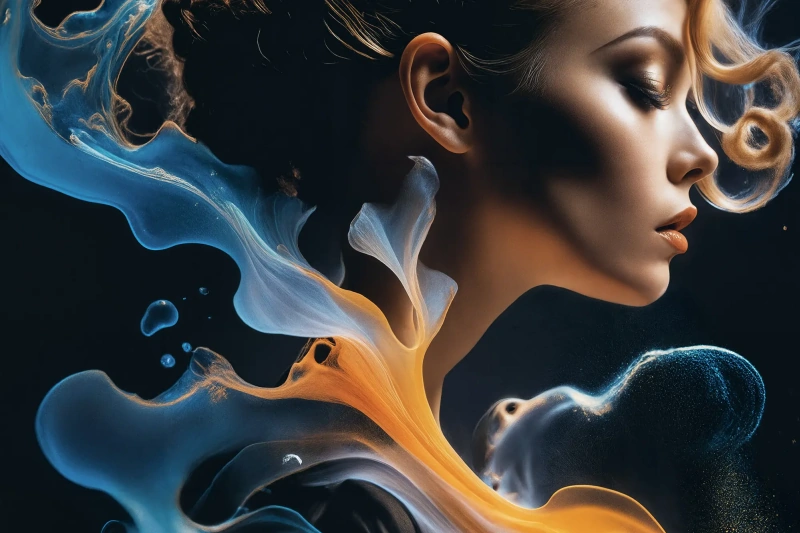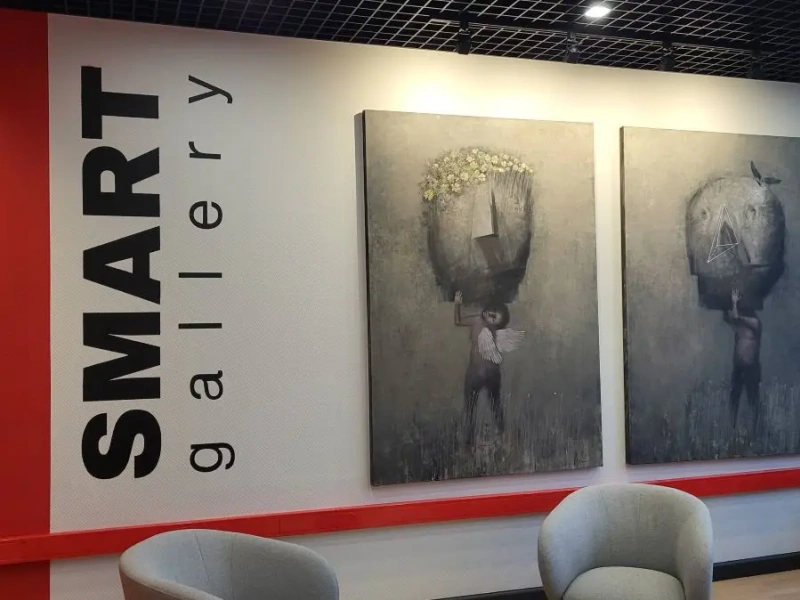
Although Yoko Ono is often reduced to her role of John Lennon's wife who broke up the Beatles, she had a thriving artistic career that started long before the both of them even met.
By marrying John Lennon, Yoko Ono became one of the most controversial women of the 20th century. So many Beatles fans were jealous of their happiness that she turned into a hate figure. First, people accused her of breaking the Lennon’s marriage and then the Beatles themselves. But only a few know that John broke Yoko’s second marriage where she had a child and the Beatles have outlived their heyday.Yoko’s life before John Lennon was just as turbulent. She was born in Tokyo in 1933 into a wealthy family of a concerting classical pianist who made a career as an international banker and a mother who was a glamorous socialite. The family swang between New York and Japan back and forth following their father’s job transfers. Yoko Ono didn’t feel at home either in the US or in Japan, sensing that she just didn’t fit in. However, having never fully belonged either to Eastern or Western culture, she has absorbed fruits from them both.
Attending an exclusive school in Japan as a child, she wrote poetry and plays and received classical training in piano and voice. Yoko Ono became the first woman admitted to the philosophy program at Gakushūin University in Tokyo, but she dropped it after two semesters and later studied writing and music at Sarah Lawrence College in Bronxville, New York. She has never graduated from the latter either, but struggled instead to find her exclusive artistic niche.
Yoko Ono made her way onto the international art scene in the early 1960s as a provocative artist. From her early days, her performances shocked people. She lived in New York, Tokyo, and London during 1960s and greatly influenced the international development of Fluxus and Conceptual art. Eventually, Yoko Ono has made profound contributions to visual art, performance, filmmaking, and experimental music. And she continues to produce work and make headlines today even though she turned 85 years this February.
1. Cut Piece, 1964

"It was a form of giving, giving and taking. It was a kind of criticism against artists, who are always giving what they want to give. I wanted people to take whatever they wanted to, so it was very important to say you can cut wherever you want to," Yoko Ono explained later.
And although art critics marked the performance as "an early piece of feminist art that called into question interpersonal relations and destruction" and later claimed that the event stressed on Feminist struggle against treating women as submissive objects in society, Yoko Ono herself said that she turned into action the idea of giving, inspired by Buddhism. "That's a form of total giving as opposed to reasonable giving like "logically you deserve this" or "I think this is good, therefore I am giving this to you," she said in he 1968 Interview with Tony Elliot, from Time Out Magazine.
Yet, by provoking people to strip her with a pair of scissors, Yoko Ono actually placed the participants in the wilful and public demeaning of herself. What she exposed so simply is the suppressed aggression and even sadism that is released when "permission" is granted to attack a vulnerable woman.
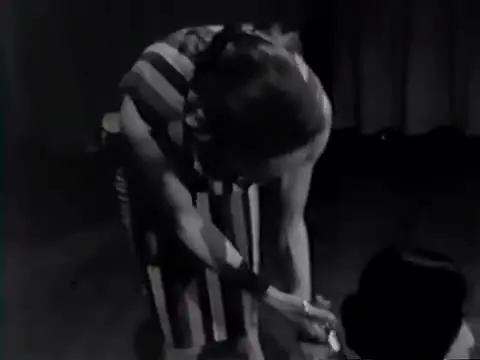

There’s a striking parallel between two performances — the humiliation Marina suffered was similarly disturbing to Yoko’s. But the subtle minimalism of the original Ono piece only underlines an egotistical and comical overkill of Abramovic’s work. Since Rhythm O performance in 1974, Marina Abramovic has been at the forefront of intimate personal exposure as a valid art genre. She has even proclaimed herself the "grandmother of performance art". But this accolade Yoko Ono deserves, not Marina.

Yoko Ono repeated the Cut Piece dozen of times in different countries. She reenacted the performance on September 15, 2003 at Theatre Ranelagh, Paris as an expression of her hope for world peace following the political changes after 9/11 attacks.
Left: Yoko Ono performing Cut Piece at Theatre Ranelagh, Paris, France in 2003.
2. Grapefruit Book, 1964
The book is composed of five sections titled Music, Painting, Event, Poetry and Object; later editions added Film and Dance. The activities suggested usually refer to a simple day-to-day life—actions, ideas, and objects—yet recontexualized as performance. Pulse Piece, for example, suggests, "Listen to each other’s pulse by putting your ear on the other’s stomach. 1963 Winter."
There is plenty of humor in the book. Just read the Conversation Piece bellow.
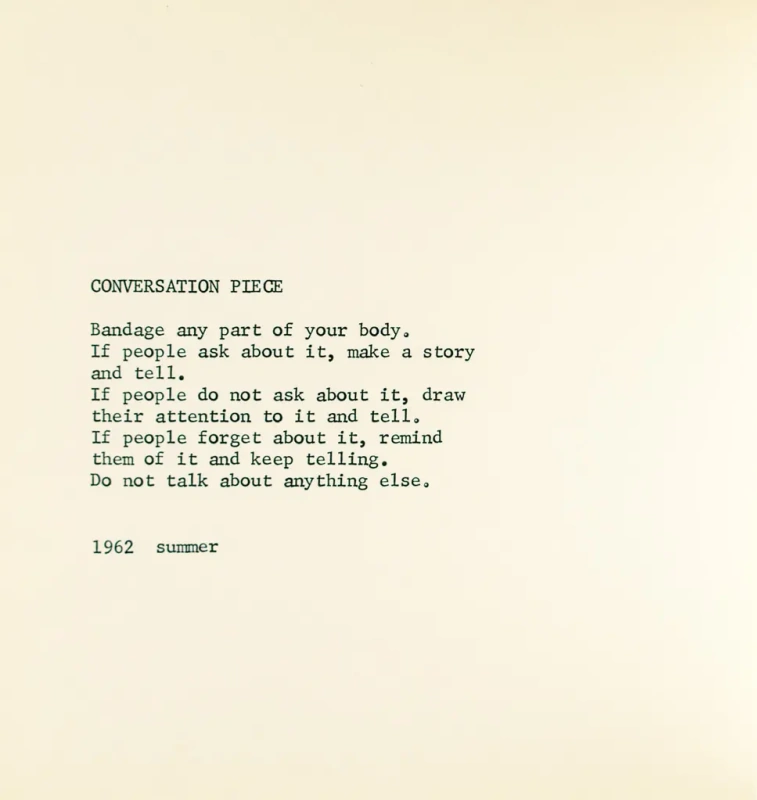
By her event scores Ono intended to replace a physical work of art with written instructions or suggestions for acts that the reader experiencing them could create. Her instructions preceded by dedications to contemporary figures of arts and letters including John Cage, Peggy Guggenheim, George Maciunas, Isamu Noguchi, Nam June Paik and La Monte Young, and also includes documentation relating to Ono’s exhibitions and performances.
In 1970, Simon & Schuster decided to rerelease Grapefruit smelling a commercial opportunity, and asked John Lennon to contribute the book’s literal introduction. John wrote: "Hi! My name is John Lennon/ I’d like you to meet Yoko Ono." "A dream you dream alone may be a dream, but a dream two people dream together is a reality." And he also answered Yoko’s provocative instruction "Burn this book after you’ve read it" with his perfect note "This is the greatest book I’ve ever burned."
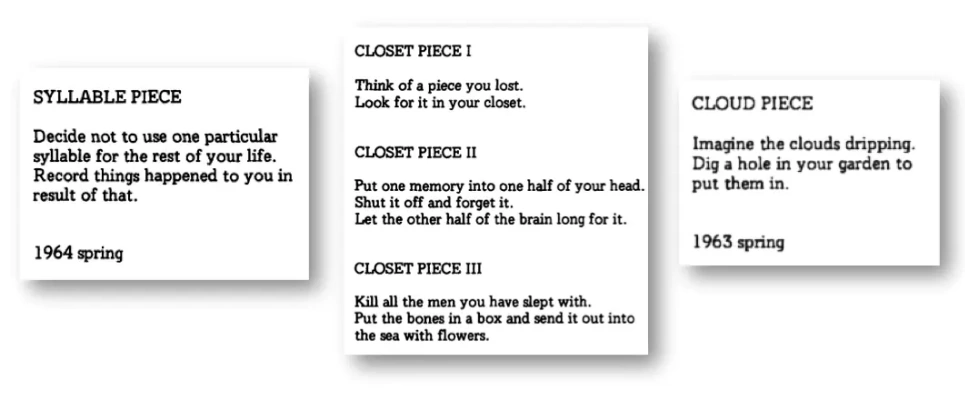
"Actually that should be credited as a Lennon-Ono song because a lot of it—the lyric and the concept—came from Yoko. But those days I was a bit more selfish, a bit more macho, and I sort of omitted to mention her contribution. But it was right out of Grapefruit, her book. There’s a whole pile of pieces about "Imagine this" and "Imagine that." … But if it had been Bowie, I would have put "Lennon-Bowie," you see. If it had been a male, you know… Harry Nilsson—"Old Dirt Road," it’s "Lennon-Nilsson." But when we did "Imagine" I just put "Lennon" because, you know, she’s just the wife and you don’t put her name on, right?" said John Lennon.
3. Ceiling Painting/Yes Painting, 1966
- Yoko Ono at the Indica Gallery, 1966. Photo by Graham Keen, credit internationaltimes.it
- Yoko Ono, Ceiling Painting. Text on paper, glass, metal frame , metal chain, magnifying glass, painted ladder. Ladder: 183 x 49 x 21 cm, framed text: 64.8 x 56.4 cm Private Collection. Photo by Oded Löbl © Yoko Ono, credit guggenheim-bilbao.eus
By some lore, John Lennon climbed by the ladder to the top and was really amused by Ono’s "YES" in block letters. In a time of different protests, when every other placard read "No this" and "No that" and everyone was anti-everything, Yoko’s art piece was like a fresh breath of air delivering positive affirmation, even though it was just a wonderful bit of absurdity.
4. No. 4 (aka Bottoms), 1966
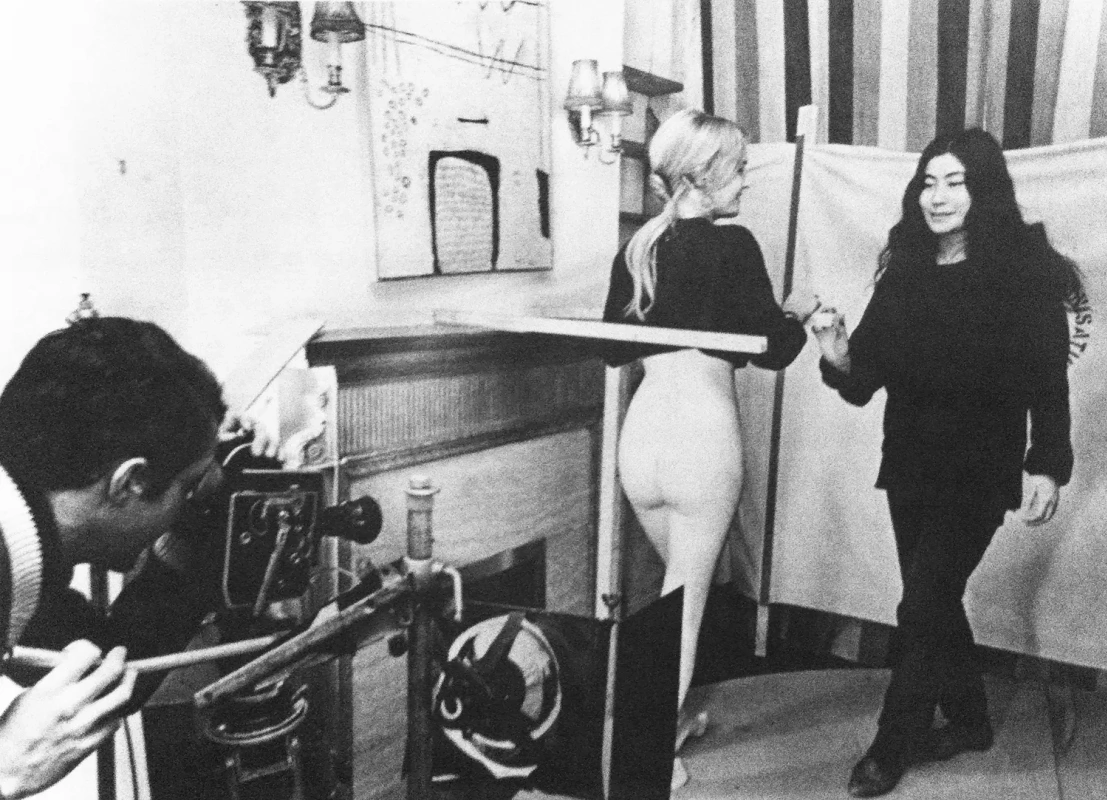
Together with the directors Tony Perkins and Tony Cox, Yoko’s husband at the time, they shot two hours of the footage in just two days at Ono’s New York City apartment at 1 West 100th Street. A low budget silent version of the short lasted for five minutes and fifteen seconds. Ono titled it "Four" which was a conceptual number for Fluxus (a minimal Fluxus name) but the film was commonly referred to as Bottoms.


"For me, the film is less about bottoms than about a certain beat, a beat you didn’t see in films, even in avant-garde films then. It was about movement. The beat in Film No 4 (Bottoms) is comparable to a rock beat. Even in the music world there wasn’t that beat until rock came along. It’s the closest thing to the heartbeat," Yoko told in 1989.
The strange film premiered at the Film-Maker's Cinematheque, New York on 6th February 1966 and turned the film world upside down.

The Four's amusing soundtrack comprised of shy giggling and commentary of the actual performers, who intellectualized the film’s absurd concept in relation to the art world. You can also hear off-screen television news coverage and Yoko voicing the concept of the film.
Female and male bottoms, with no signs of genitals and faces of their owners, filled the film with a charming sense of innocence. However, it was still rated X by British censors and banned by the Royal Albert Hall in 1967.
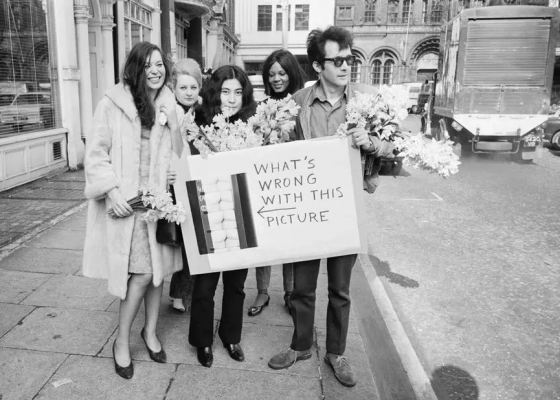
The censorship has served Yoko Ono well in a way. Although she could never get profits from the film distribution to cover her £1,000 production costs, she got sensational and valuable media coverage, especially by BBC newsmen, who were enamored by Yoko and her film. One TV station has actually put three minutes of the banned film on the air while telling the censorship story in the evening news. It was the best advertisement Yoko Ono ever dreamed of!
Above: Yoko Ono in the center of a group at a protest outside the offices of the British Board of Film Censors, London, 10th March 1967.
Yoko Ono just could not sit around, as you may guess. She decided to stage a peaceful protest at the British Board of Film Censors. Early in the morning, she handed out conceptually 1,000 daffodils, supported by several of her 'cast', to people who worked for the Board or to those who were just passing by the building. The happening was filmed by the reporters who gathered around.
The group, headed by Yoko Ono, displayed photo stills from the film, with text asking 'What's wrong with this picture?' (see photo above). The same day the newspaper headlines read, 'Fragrant Picket for Film Censor', and 'Yoko, the Girl BEHIND a Protest.' She defended her film, "The whole idea of the film is one of peace. It’s quite harmless. It is not in the least bit dirty or kinky. There’s no murder or violence."
"I'm very pleased that my film ‘Bottoms' is finally being shown at The Royal Albert Hall, 50 years after it was banned. As I said at the time in 1967, "These bottoms belonged to people who represented the London scene. And I hope that in 50 years or so, they will see that the 60's was not only the age of achievements, but of laughter. Love, Yoko."
It may seem unbelievable but Yoko Ono had envisioned her film’s future…
5. Bed-In For Peace, 1969
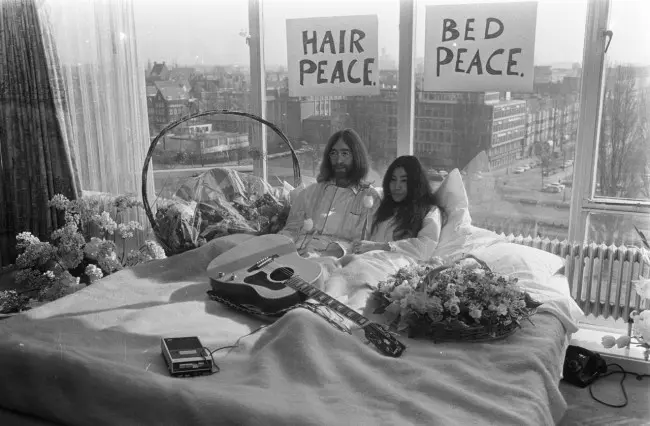

Two years later, in 1971, Yoko Ono and John Lennon made a song out of that. 'Happy Xmas (War Is Over)' became an anthem, just like the preceding 'Give Peace a Chance' that was written and performed during their Bed-In honeymoon in Montreal, Quebec, Canada.
6. Wish tree, 1993-ongoing

Wish Tree has been integral to many of Ono’s exhibitions at museums and cultural centers in several cities around the world, including New York, Tokyo, London, Venice and Dublin. And any other city could make the installation as well unless it is for non-commercial, non-fund-raising purposes, and happens under Ono’s direction. Any school, workplace or community should just plant a tree native to the area and invite viewers to tie a written wish of hope to its branches.

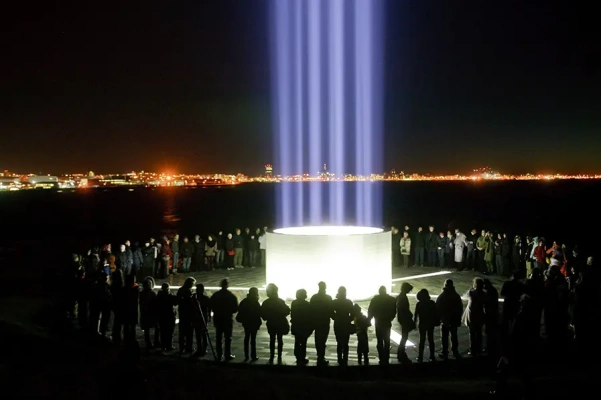
"I hope Imagine Peace Tower will give light to the strong wishes of World Peace from all corners of the planet and give encouragement, inspiration and a sense of solidarity in a world now filled with fear and confusion. Let us come together to realize a peaceful world. I consider myself very fortunate to see the dream my husband and I dreamt together become reality," Yoko Ono, 2007.
Left: Yoko Ono, Imagine Peace Tower, 2007. Isle of Videy near Reykjavik, Iceland.
7. Mended Cups and Unbroken Cup set, 2015

As if trying to fix the world’s sorrows, Yoko Ono repaired 6 cracked coffee cups with glue and golden paint and wrote the dates and places of the six catastrophic events that have affected the world on the saucers under each cup.
One of the cups refers to the tragedy that has directly affected her life: the day her husband John Lennon was murdered by Mark Chapman in December 1980, which she witnessed at close range. Other catastrophies indirectly affected Yoko Ono, yet they brought death to millions of people: the atomic bombing of Hiroshima in 1945; the massacre at My Lai, in Vietnam in 1968; the bombing of Dresden by the Americans and British in the final months of the Second World War; the bombing of Guernica during the Spanish Civil War and the Nanking Massacre, also known as the 'Rape of Nanking'.
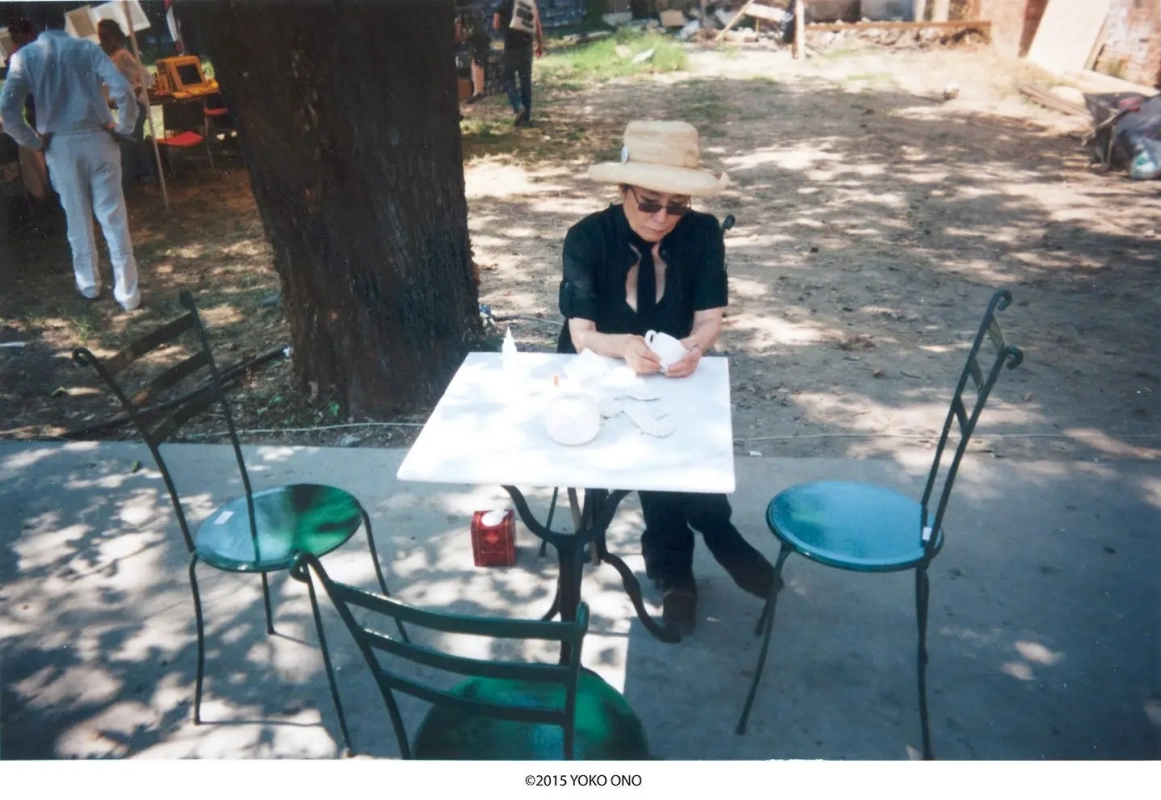
Mended Cups collection was inspired by the ancient Japanese art of Kintsugi, a technique of repairing broken or cracked pottery using brushstrokes of gold and silver. Kintsugi follows a philosophy that treats the breakage and repair as part of the object’s history-an important and precious detail, rather than something to disguise.
8. Mend Piece, 2015
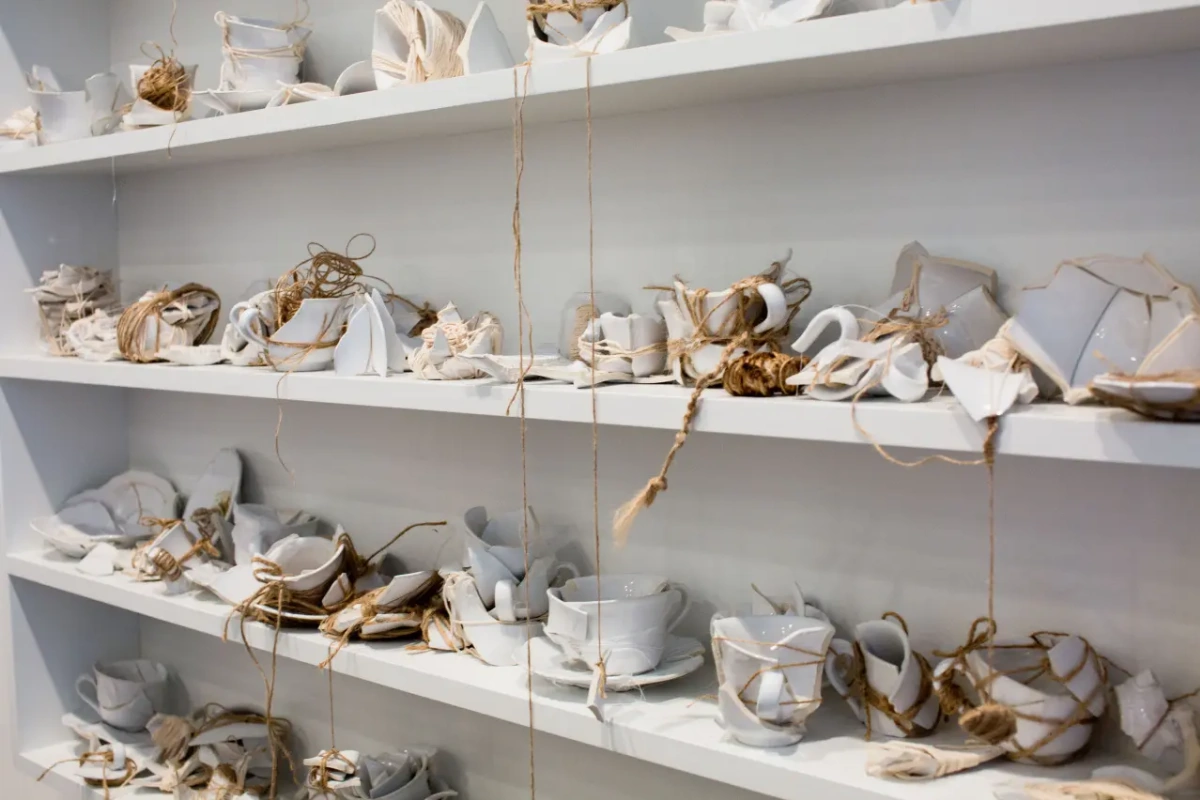
Its idea is in repairing shattered ceramics using the glue, tape, and string under the instructions from Yoko, "Mend with wisdom mend with love. It will mend the earth at the same time."
Metaphor of the participative project is a simple one: if you can fix a broken tea cup—a vessel that signifies sharing and community—you can begin to heal relationships.
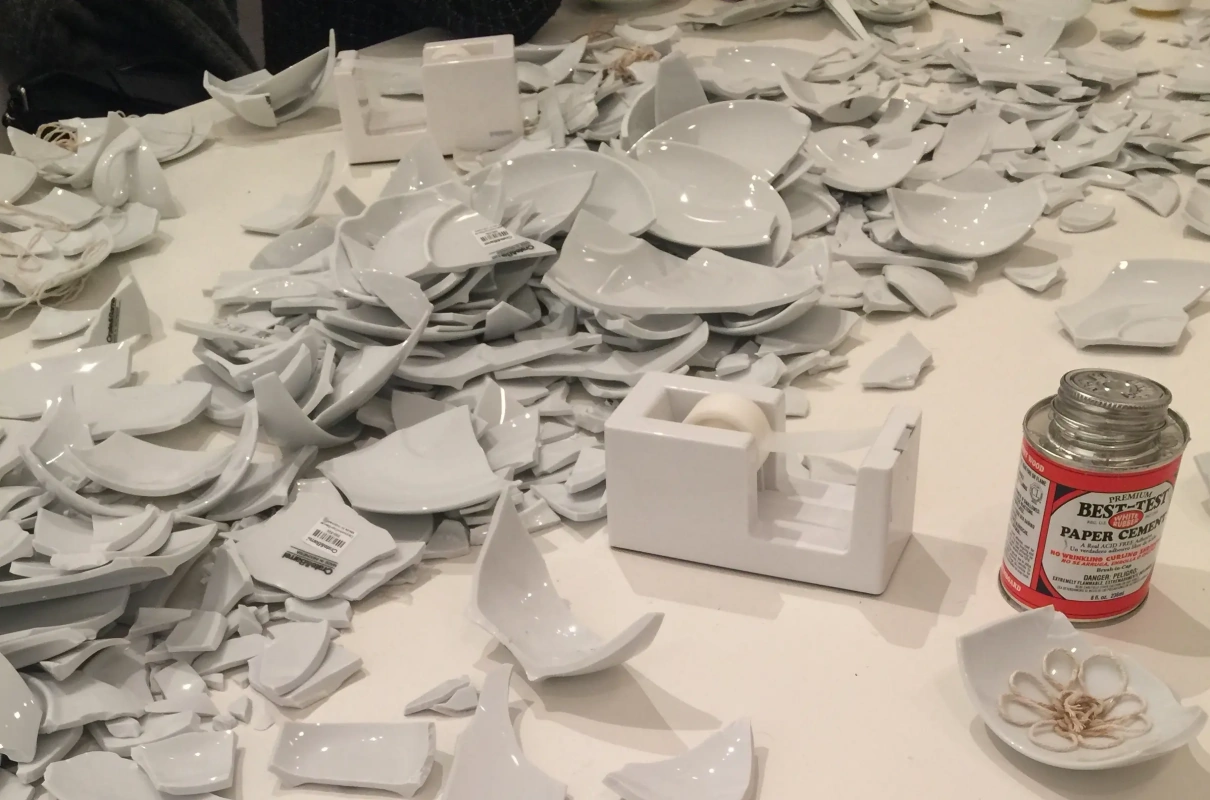

While participants repair the pottery or make their own sculptures from broken fragments of tea cups, they not only 'mend the universe' but their own tumultuous life by warm conversations with each other at one table. Bonded by the communal experience of the work side by side, visitors get closer to each other. And this is a small yet important step towards a collected effort to mend the world.
Above: Participants of the Mend Piece doing their art pieces. Photo by Blair Prentice of iheartmyart.com
- One of the art pieces done by participants of the Mend Piece by Yoko Ono at the Andrea Rosen Gallery in Chelsea, 2016. Photo credit newexilesite.files.wordpress.com
- Shelves with mended pottery, Mend Piece by Yoko Ono at the Andrea Rosen Gallery in Chelsea, 2016. Photo credit newexilesite.files.wordpress.com
When participants are finished with their work, they can drink coffee from Ono’s Mended Cups set.
9. #smilesfilm, 1967-ongoing
Ono’s ongoing #smilesfilm project is a vision of mass participation inviting people to upload images of their smiles to Instagram and Twitter that are collected on the #smilesfilm website. The idea is to tap into the collective power of smiles, or as Yoko Ono put it, "Our smiles change moods and opinions as they radiate positive energy out into the world, creating joy, healing and peace, changing the Universe for the better… Each time we add our smiles to #smilesfilm, we are creating our future, together. Give us your smile!"

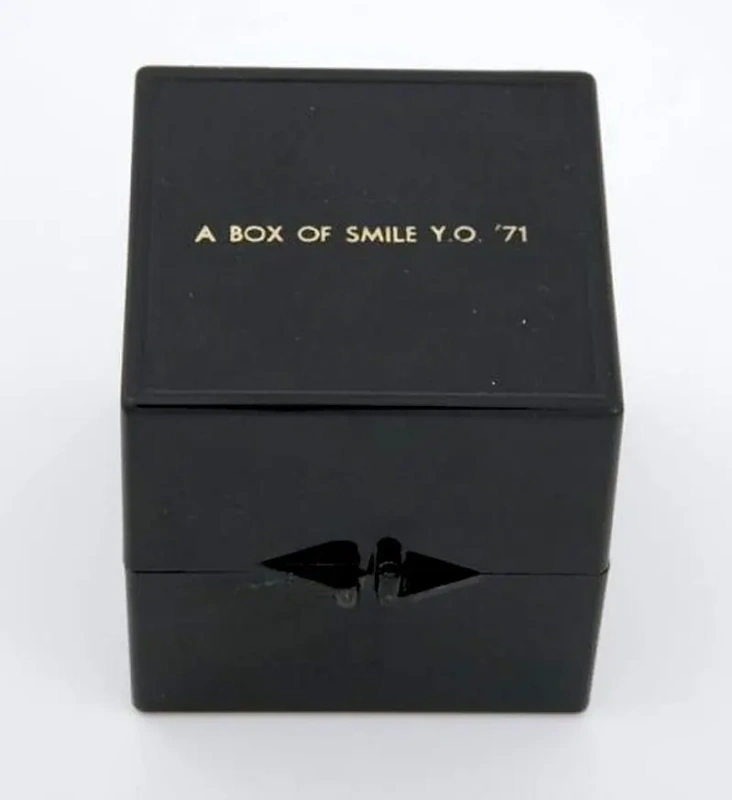
Then Ono has done her 1971 piece "A Box of Smile." A conceptual artwork, it consists of a small plastic box, which reveals a mirror on the bottom when the viewer opens the lid. So, the viewer completes the piece upon seeing his or her reflection in the mirror, presumably smiling.
Left: Yoko Ono, A Box of Smile, 1971. Photo credit improvisedlife.com

Now users can look through uploaded snapshots geographically on a map, view them in a moving slideshow chronologically and take snapshots of their own smiling faces, which are collated into the app and placed on a map based on where the photo was taken.







